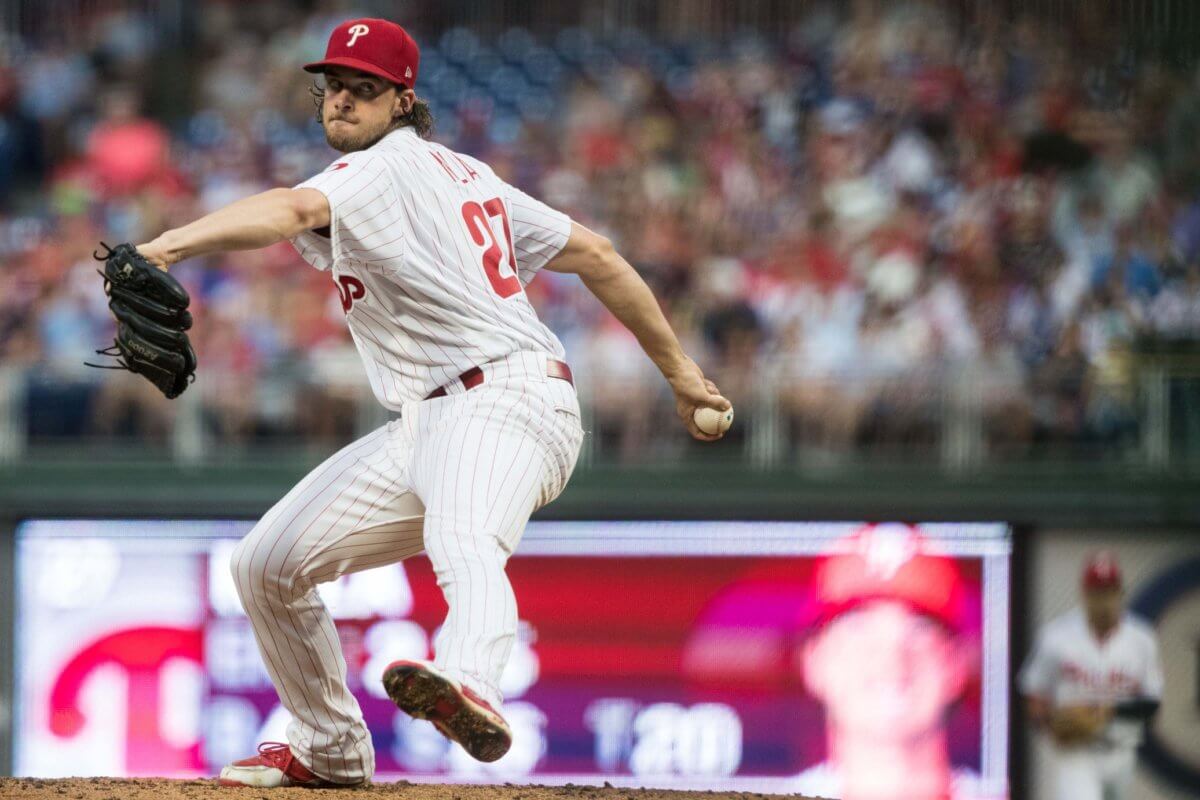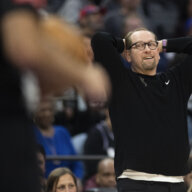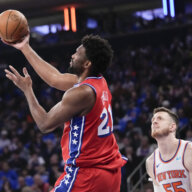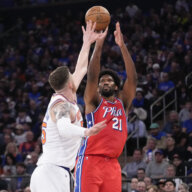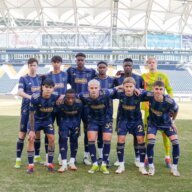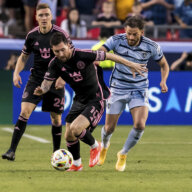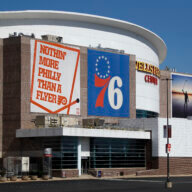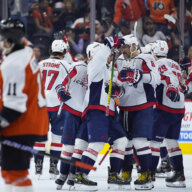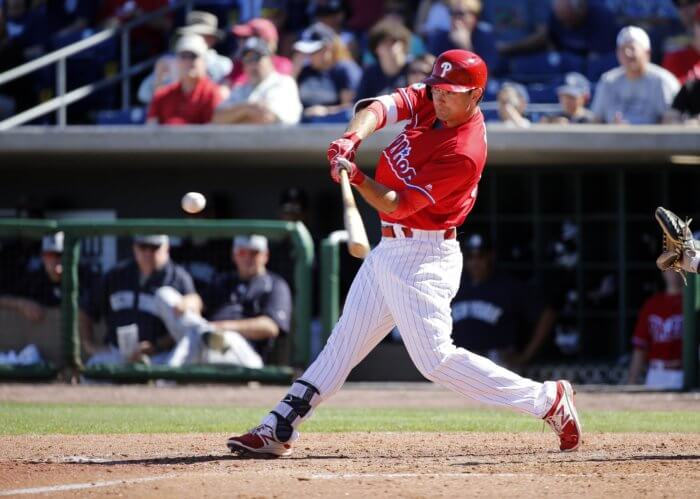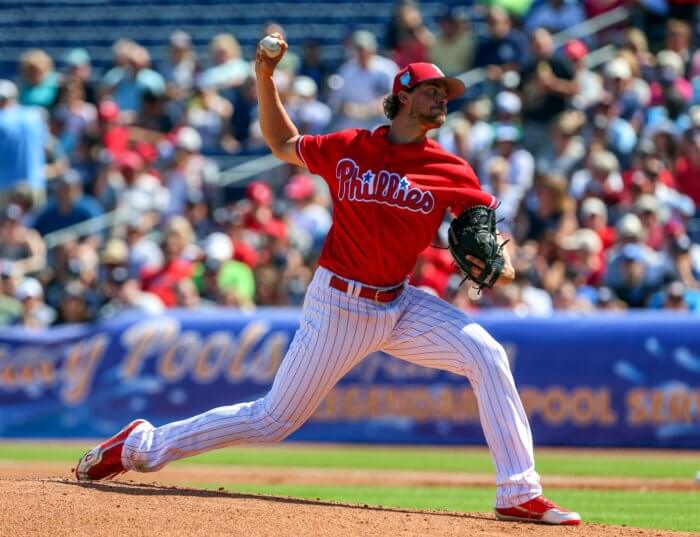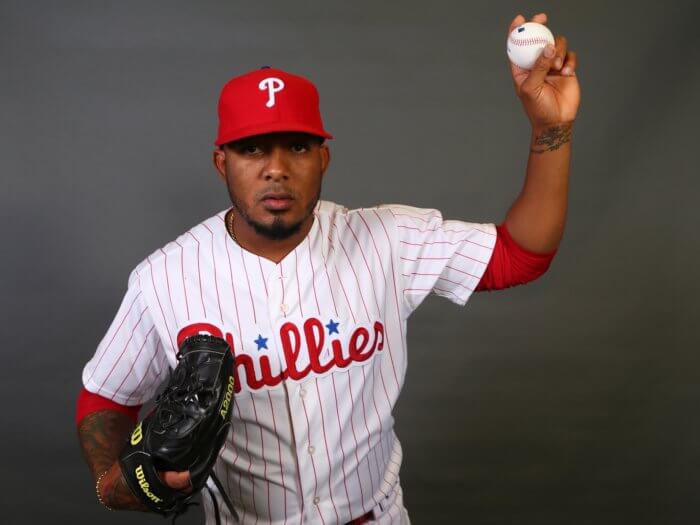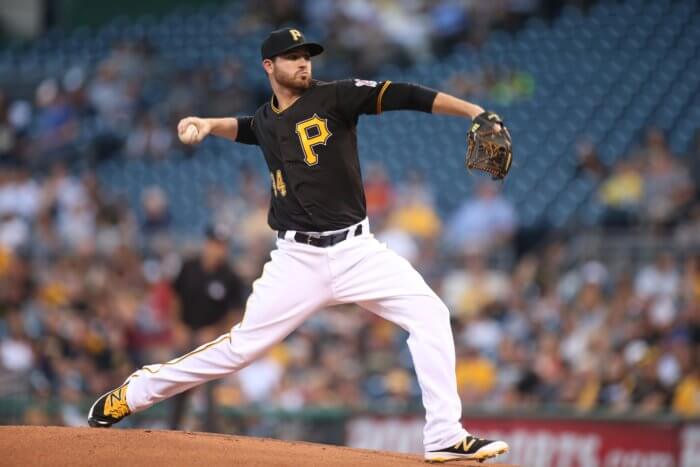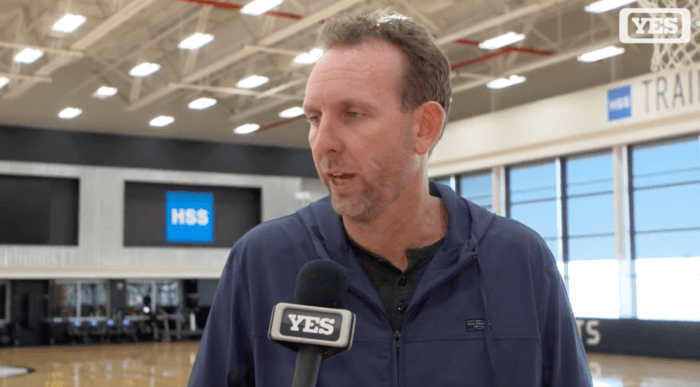Coming into the season, I was wildly concerned with the pitching staff that Gabe Kapler would have at his disposal. While the Phillies did bring in Jake Arrieta, a former Cy Young winner, to stop what could be hemorrhaging heading into 2018, there was legitimate concern for this team with who would take the mound each day. Needless to say, those perturbed thoughts have been quelled, maybe not totally subdued, but slowed enough for this team to have its largest divisional lead of the season. Despite four other pitchers making ten starts this season, the core five of the rotation have remained relatively in tact, having started a combined 93 games, with relative success.
Aaron Nola: A+
There is no word to use that adequately describes the strides Aaron Nola has made in 2018. After posting a 12-11 record in 2017, Nola has become an undeniable ace. He isn’t just the ace of a middling team either; He’d likely be the number one on more than a handful of other Major League teams this season.
Through 21 starts, Nola is 12-3 with a 2.42 ERA. He was the Phillies’ lone representative at this year’s All Star Game, a showcase in which he threw a scoreless frame, striking out two American League all stars. Nola has ascended, or descended, depending on the category, in every statistical frame imaginable this season. Most notably, his WHIP, or walks plus hits per inning pitched, is under 1.00 for the first time in his career. He’s allowed 133 baserunners in 134 innings pitched. Nola is also striking out hitters at a high rate. He’s punching out over nine hitters per innings pitched. Boil that down to a more manageable number, and Nola is striking out just over one per one. Should he reach the 200 inning mark this season, it’s likely that Nola will strikeout 200 hitters for the first time in his career. The young righty is creeping up on his career high in innings pitched, as he’s tossed 134 thus far. Last season, he threw 168 innings. Over those 168 innings, Nola surrendered 18 homeruns, or one long ball every nine and third innings. This year, he’s allowed seven homers over 134 innings, or just one bomb every 19 innings pitched. For those of you into the advanced statistics, Nola is on pace for a career best in WAR, or wins above replacement. Last year, Nola posted a 4.3. This year, if he remained on this pace, he’d finish with a 6.1. That means Nola is effectively six wins better than the average pitcher he would have replaced.
The Phillies currently hold a lead in the NL East over the Atlanta Braves. If, for some reason, the Phillies find themselves not winning the division, and instead, playing in the Wild Card Game, few Phillies fans would be concerned in sending Nola to the mound to win that game. While that likely means the Phillies would be without Nola’s services until Game Three of the NLDS, a team that hasn’t reached the postseason since 2011 can’t argue with the opportunity to be playing October baseball once more.
Jake Arrieta: B
The Phillies knew they needed another starting pitcher heading into 2018. They went out and got the best one available. The team inked Arrieta to a $75 million contract late in the offseason, bringing up the question, would he be ready in time. Arrieta has only missed one start this season, the first time through the rotation, because of his late spring start. And while that amount of money is certainly enormous, Arrieta provides a veteran leadership that was clearly lacking among the staff.
But more importantly, what Arrieta brings, generally speaking, is consistency. That doesn’t mean he has been without his share of struggles, but the righty brings a sense of reliability to the team. This season, he’s 8-6 with a 3.45 ERA. Is that number slightly high for a $25 million a year man? Probably. But that was the price you were going to have to pay for Arrieta. And landing him has provided the Phillies with what they needed. In 20 starts this season, Arrieta has thrown just over 112 innings, averaging 5.6 innings per start. While essentially not getting out of the sixth, on average, Arrieta is that consistent factor that wasn’t present last season. His walks per nine is slightly up. His strikeouts per nine is slightly down. His WHIP is above his career total. All of these numbers make you believe Arrieta isn’t pitching well, or at least at his career average, but understand this: 2014-2015 threw his career numbers way off with how dominant he was. He made 58 starts over that time, going 32-11. The higher of the two year’s ERA was 2.53.
That’s not who Jake Arrieta is anymore. But what he is is someone who stabilizes the rotation as a legitimate number two. Remember that Wild Card Game I hypothetically mentioned? Remove Arrieta from the rotation, and it leaves you with Zach Eflin starting Game One of a potential NLDS. Arrieta allows you to more naturally slide every starter back one while he himself starts that Game One. He’s been a blessing to this team, statistically speaking or not.
Nick Pivetta: C
Pivetta is almost an anomaly of himself. He seems to have little middle ground. His starts are generally wildly successful or a mighty struggle. This season, Pivetta is 6-8 with a 4.69 ERA in 20 starts.
Granted, this is Pivetta second season as a Major Leaguer. He’s clearly still figuring things out. His strikeouts per nine is well over ten now and walking more than one hitter per game less than he did last season. In fact, he’s second on the team in strikeouts, behind just Aaron Nola. But the hits per nine is still an alarming stat. Pivetta is serving up more than a hit per inning. Pair that with his modest walk ratio, and Pivetta has posted a 1.32 WHIP this season. That number is down nearly two tenths of a point, which means he’s trending in the right direction. It’s still, however, an alarming number for this season alone. Pivetta may turn out to be a bona fide starter in this league, but I’m only evaluating this season, and this season he’s been average. Therefore, he gets an average grade.
I’ve cried out to move Pivetta to the bullpen over the last two seasons now, but I don’t believe my calls will be answered. He’s seemingly fallen behind both Vince Velasquez and Zach Eflin in the rotational depth chart. Pivetta may not get a start come playoff time. That may be a wise move to have him come out of the bullpen.
Vince Velasquez: B-
The tale of two halves of the first half continue with this team when you mention Vince Velasquez. He’s up and down, just like Pivetta, in a near identical fashion. When Velasquez is on, he’s nearly unhittable. Certain games, however, he looks shaken still. The difference is his command. When Velasquez’s command isn’t there, he tends to nibble around the strikezone, falling behind on hitters. That’s when he has to come into the zone, where hitters are taking advantage. His ability to throw strike one early in the count is a huge determinant in how Velasquez will throw on any given day.
This season Vinny is 7-8 with a 4.05 ERA. That number on the surface isn’t positive, but consider he surrendered 20 earned runs in three starts that lasted a combined 14 innings, and Velasquez’s ERA is much closer to three than four. His numbers are trending in the right direction. He’s striking out nearly two more hitter per nine, and his walks per nine is down nearly one per game. Those two combined equal a much more efficient strikeouts to walk ratio. He’s surrendering less homeruns and less hits, which has led to a career low 1.19 WHIP thus far. He’ll likely etch career marks in innings pitched, strikeouts and ERA this season.
I’m still not entirely sold on Velasquez, and I don’t know if I ever will be, but he’s trending in the right direction in most statistical categories. He may never be an All-Star, but if he pitches well in the second half, he’ll be a serviceable back end of the rotation type pitcher.
Zach Eflin: B+
Does anybody here want to go find an old tweet of mine and put me on blast for it? Because those of you on Twitter itself like to do that with Eflin. I like to believe I’m man enough to admit when I’m wrong, and for this season, I’ve been wrong about Eflin. I was adamantly against the resurfacing of Zach Eflin after how poorly he pitched in 2016 and 2017. I understand it was one season, but the stats, paired with the eye test, don’t lie. But so far, in 2018, I was wrong about Eflin.
He’s pitched well this season, winning seven of his 13 starts while losing just two games. In his last seven starts, Eflin is 5-0 with a 3.11 ERA over 37.1 innings pitched. He’s striking out nearly double the amount of hitters he did a season ago at over 8.6 per game. His walks per nine are a shade higher, but not enough to make a significant impact. But the most telling stat for Eflin this season has been the hits he hasn’t surrendered. Last year, Eflin gave up over 11 hits per nine innings pitched. This year, that number is down to 8.2 hits per nine. He’s keeping runners off base and working quickly to get through hitters.
He isn’t going deep into games, averaging just 5.4 innings per start, but he’s been effective in his time on the mound. That number could easily be manipulated though by saying he only threw 2.2 innings against the Dodgers in his last outing. Understanding that he’s only thrown 13 games this season, his average start jumps to over 5.7 innings per game. While Eflin won’t likely be called upon to start the first game of an NLDS, he definitely could see the mound in what could be a critical Game Three or Four. He’ll need to be at his best, which, this season, has been well above the norm.
Mandatory Credit: Bill Streicher-USA TODAY Sports

